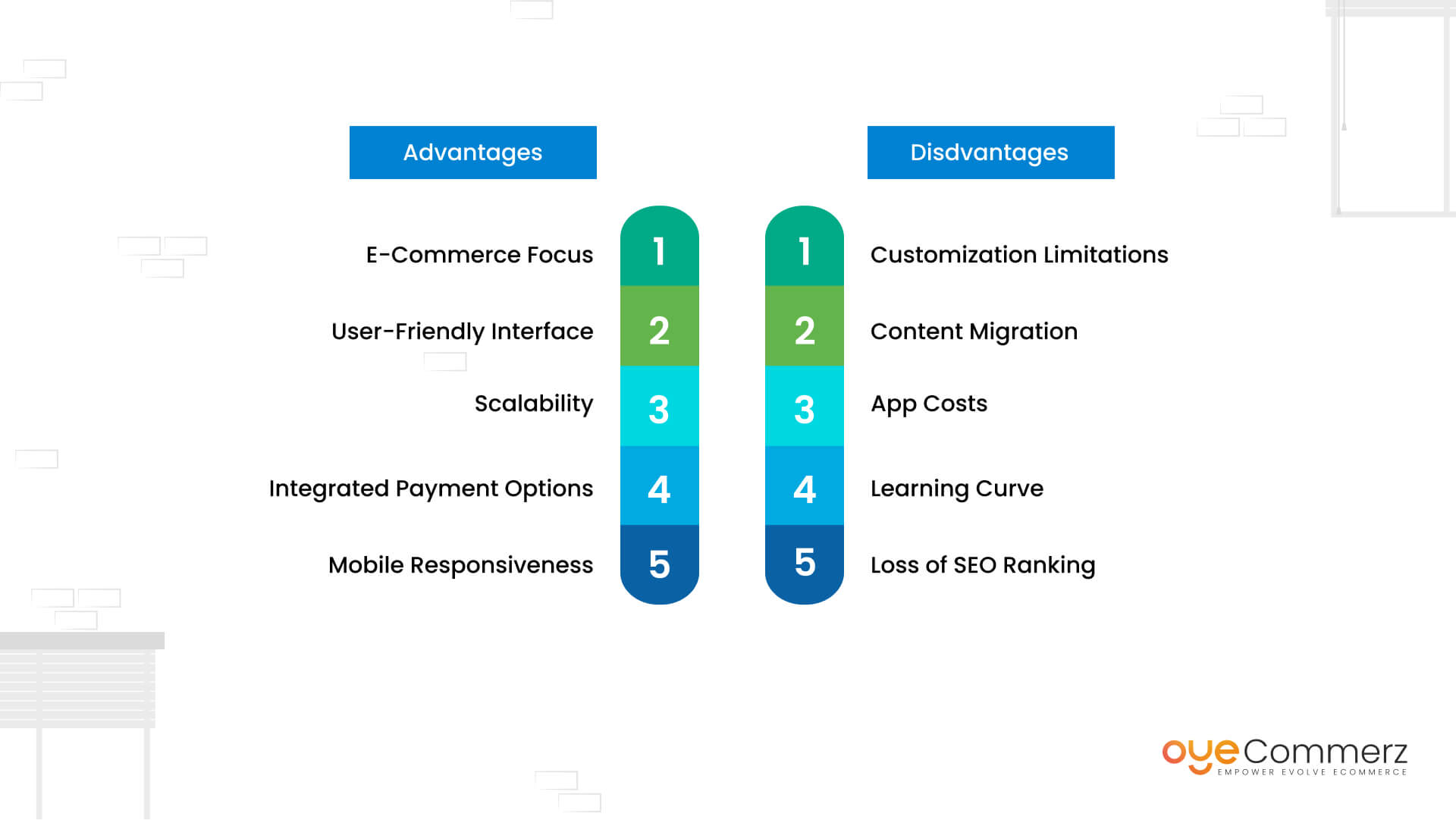Shifting from WP to Shopify is an exciting step toward streamlining your online store processes. As businesses grow, selecting a platform that supports growth potential, UX, and flexibility becomes crucial. Shopify is widely recognized as a preferred choice for online merchants, offering superior flexibility, data protection, and ease of use. In this guide, we will delve into the transformative impact of this migration, discuss the benefits, and share practical tips to ensure a smooth transition.
1. Top Reasons to Transition from WP to Shopify
The combination of WordPress and WooCommerce, has served countless online stores. Nevertheless, as businesses expand, issues like plugin dependency, security vulnerabilities, and complex setups can hinder progress. Shopify, specifically created for digital retail, addresses these concerns with an all-in-one, user-friendly platform. Statistics supports this shift—Shopify powers over 4.4 million stores globally, with a reported 10% increase in sales performance for numerous merchants post-switch.
2. Key Benefits of Shopify for E-commerce Success
Shopify’s robust ecosystem is tailored for scaling businesses. Its standout features are:
- Seamless Customization: Shopify offers over 80 expertly crafted themes.
- Integrated Tools: Capabilities such as Shopify Payments and integrated SEO streamline operations.
- International Expansion: Multi-currency support and regional customization enable brands to reach global markets.
Additionally, Shopify delivers an availability percentage of 99.98%, guaranteeing your store is always operational.
3. Getting Ready for Your WP-to-Shopify Transition
Before migrating, evaluate your existing setup. Analyze product data, customer details, and search engine rankings. Tools like Shopify’s Migration Kit or third-party solutions can simplify this process. Develop a detailed strategy, ensuring all assets—item details, images, and articles—are optimized for transfer.
4. Data Migration: A Critical Step
Transferring your data is a cornerstone of a successful transition. When moving from WP to Shopify, focus on:
- Inventory Details: SKU, descriptions, and categories.
- Customer Data: Emails, order history, and custom fields.
- SEO Optimization: Retain meta tags, Bulk migration to Shopify URLs, and redirects to maintain search rankings.
Use apps like LitExtension to streamline data transfer while minimizing errors.
5. Tailoring Your Shopify Store to Fit Your Brand
After the move, customizing your Shopify store helps it reflects your business identity. Take advantage of Shopify’s intuitive page builder to design pages effortlessly. Shopify's themes are mobile-responsive, providing a seamless UX across devices—a critical factor, since 74% of e-commerce traffic comes from mobile visitors.
6. Maintaining SEO During Migration
SEO is vital for maintaining your visibility during migration. Shopify is highly optimized for search engines with organized link formatting, preloaded features, and seamless blog integration. Ensure:
- Set up URL forwarding for existing links.
- Migration for WordPress websites Enhance updated content with targeted phrases.
- Use Shopify's apps Plug in SEO to monitor performance after the switch.
7. Post-Migration Testing
Once the migration is complete, run detailed checks.
Review: - Page load times (Shopify boasts faster speeds compared to WP).
- Payment integration reliability and transaction flow.
- Mobile responsiveness.
Testing ensures your store delivers a smooth shopping journey from day one.
8. Case Study of a Successful Migration
One such migration success story is Gymshark, a fitness apparel brand that transitioned to Shopify. Post-migration, the company saw a 60% boost in mobile sales and reduced site downtime. This showcases the potential of Shopify in driving e-commerce growth.
9. Challenges and Solutions
Migration comes with challenges, such as information accuracy and adjusting tailored features. However, Shopify’s extensive assistance and third-party experts make overcoming these hurdles manageable. Partnering with qualified Shopify developers helps guarantee a trouble-free transition.
10. Starting Your Journey with Shopify
Migrating from WordPress to Shopify marks a strategic decision to e-commerce. By focusing on growth, streamlining operations, and improving buyer satisfaction, Shopify enables companies to succeed in competitive markets.
Conclusion
Transitioning from WP to Shopify offers a smart solution that can significantly boost your e-commerce success. With a well-structured strategy, the right tools, and expert support, you can achieve new success milestones.
Excited to start the journey? Let’s discuss how our Shopify migration services can transform your e-commerce platform. Get in touch today, or consider: Can your business afford to miss out on Shopify’s growth potential?
